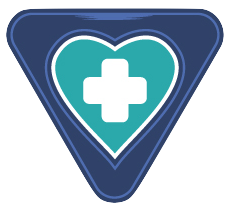Prostate cancer surgery represents a pivotal moment in the treatment process, with significant implications for a patient’s physical and emotional well-being. Central to this journey are two primary surgical methods: robotic prostatectomy and open prostatectomy. Each approach has distinct procedural characteristics, recovery experiences, and long-term effects. Notably, robotic prostatectomy has gained popularity due to its minimally invasive nature, offering patients a shorter hospital stay and potentially reduced recovery times. These differences significantly influence the overall recovery journey, emphasizing the need to understand the specificities of each procedure.
During robotic prostatectomy, surgeons employ advanced robotic systems, maneuvering instruments through tiny incisions. This technique allows for greater precision and often results in less trauma to surrounding body tissues, which, in turn, may lead to a smoother recovery. In contrast, the open prostatectomy entails a more extensive incision and a larger operational field, potentially resulting in a lengthier recovery period due to increased post-operative discomfort and potential complications. Understanding these nuances empowers patients to make informed decisions in conjunction with their healthcare teams.
Timeline of Recovery: What to Expect
The recovery timeline post-surgery can be multifaceted, with timelines varying based on the nature of the procedure and individual patient factors such as age and overall health. A general framework for recovery indicates that individuals can expect to be in the hospital for 1 to 4 days, with robotic prostatectomy typically allowing for earlier discharge compared to open surgery. Following discharge, the road to recovery involves critical self-care components and ongoing communication with healthcare providers.
Patients may experience immediate post-surgery discomfort, requiring careful management through prescribed pain relief strategies. Initial healing is often characterized by the presence of a urinary catheter, which assists in bladder drainage during recovery. This catheter generally remains in place for 1 to 2 weeks, during which healthcare professionals provide essential guidance on care and hygiene to mitigate the risk of infection. The careful management of wound care and hydration plays a critical role during this early phase, setting the stage for subsequent recovery.
Long-term Considerations: Managing Side Effects
One of the more daunting aspects of prostate surgery is the potential for long-lasting side effects, notably urinary incontinence and erectile dysfunction. Statistics reveal a substantial portion of patients—over 26%—may endure urinary incontinence post-surgery, while more than 60% might face erectile dysfunction. These figures underscore the importance of acknowledging not just the physical but also the emotional ramifications of surgical outcomes.
Incontinence can manifest shortly after catheter removal, with some individuals experiencing leakage for several days. The journey to regain full control can be influenced by various factors, including rehabilitative exercises and potential medical interventions. A proactive approach, encompassing pelvic floor exercises and consultations for specialized treatments, can significantly enhance one’s quality of life. Moreover, addressing erectile dysfunction may require a tailored regimen of therapies, ranging from medications to devices and counseling.
A Supportive Framework: Engaging with Healthcare
Continued engagement with healthcare providers post-surgery is crucial. Regular follow-up visits are imperative; these typically occur every three months for the first year, transitioning to biannual check-ups thereafter. During these visits, patients should discuss not only their physical recovery but also any lingering psychological effects. Open conversations about advancements in treatment options for side effects allows patients to explore all avenues available for improving their post-operative quality of life.
Patient advocacy plays a vital role in this process. Engaging with support groups, whether in-person or virtual, offers emotional sustenance and practical insights, allowing individuals to navigate their recovery journey with greater ease. Understanding that they are not alone can empower them to share experiences and strategies for managing side effects more effectively.
Reclaiming Life: The Road Ahead
While the path after prostate cancer surgery may be fraught with challenges, it is also replete with opportunities for personal growth and resilience. Slowly reintroducing typical activities and gradually ramping up physical exertion contributes not only to physical recovery but also supports emotional well-being. Tone down the emphasis on perfection; rather, celebrate the small victories that signify progress.
Returning to everyday activities can vary significantly among individuals. Many find that by 6 to 8 weeks post-op, they are back to routines they had prior to surgery, although adaptations may be necessary to accommodate for any ongoing side effects. Encouragement from family, friends, and healthcare professionals during this transitional phase can make a profound difference.
Embarking on life post-surgery is not simply about recovering physically; it’s about reclaiming one’s sense of self, embracing new normalcy, and fostering resilience. With the right support network, a positive attitude, and an informed approach to recovery, patients can navigate this journey with hope and strength, transforming challenges into stepping stones towards a renewed life.


Leave a Reply